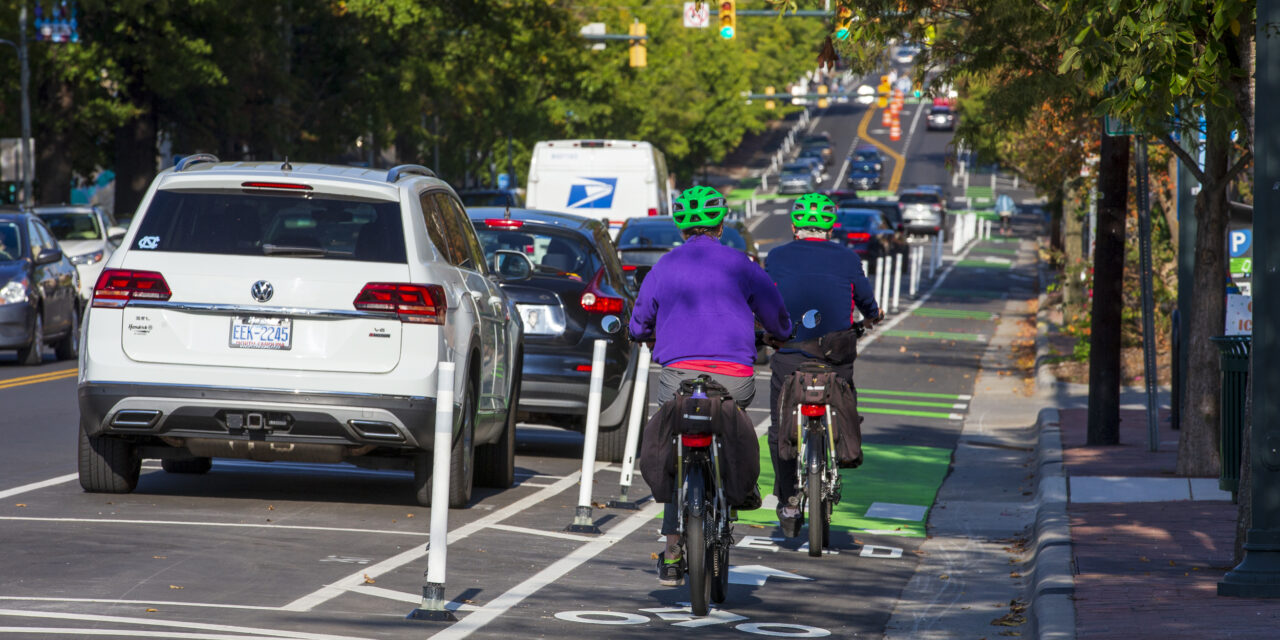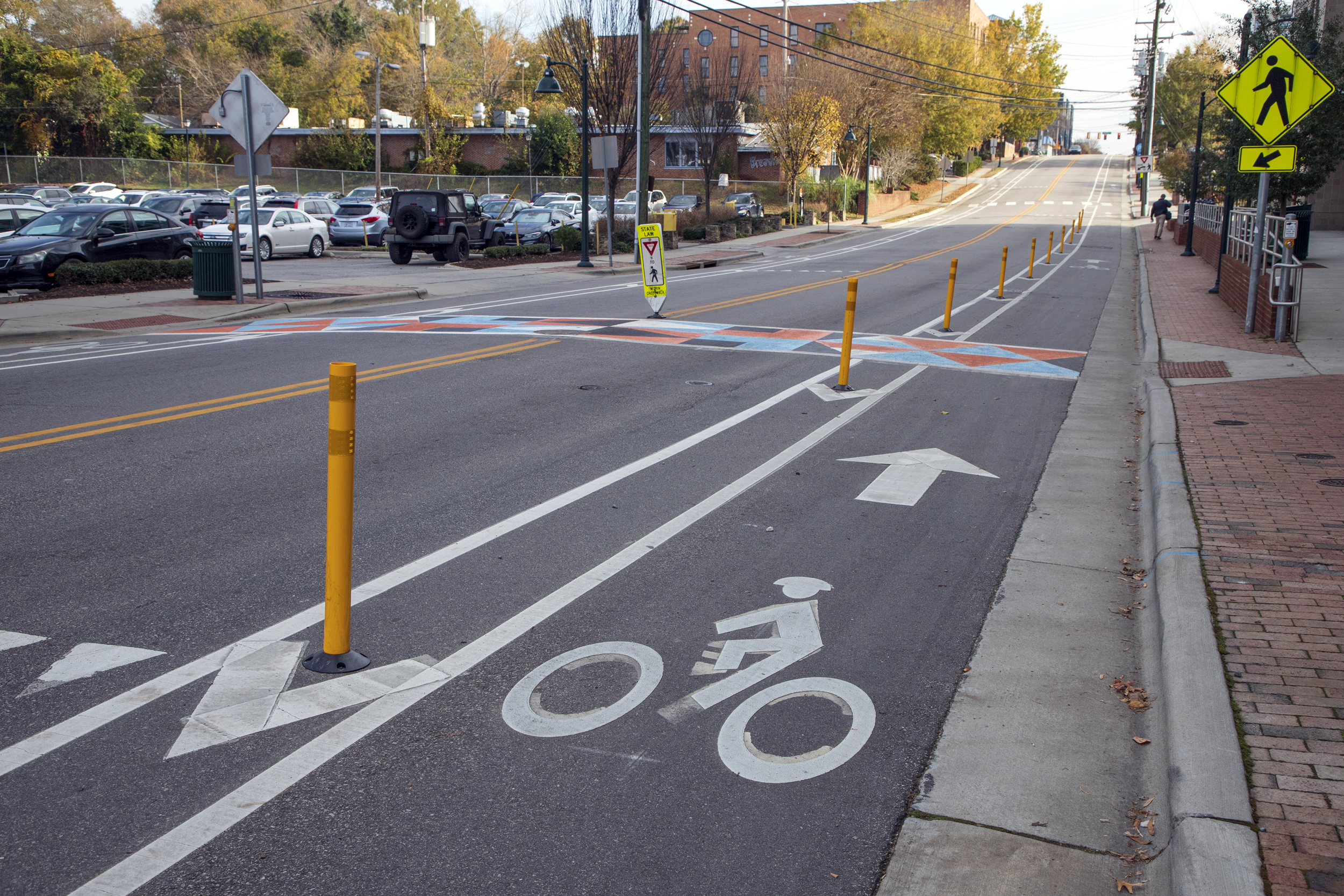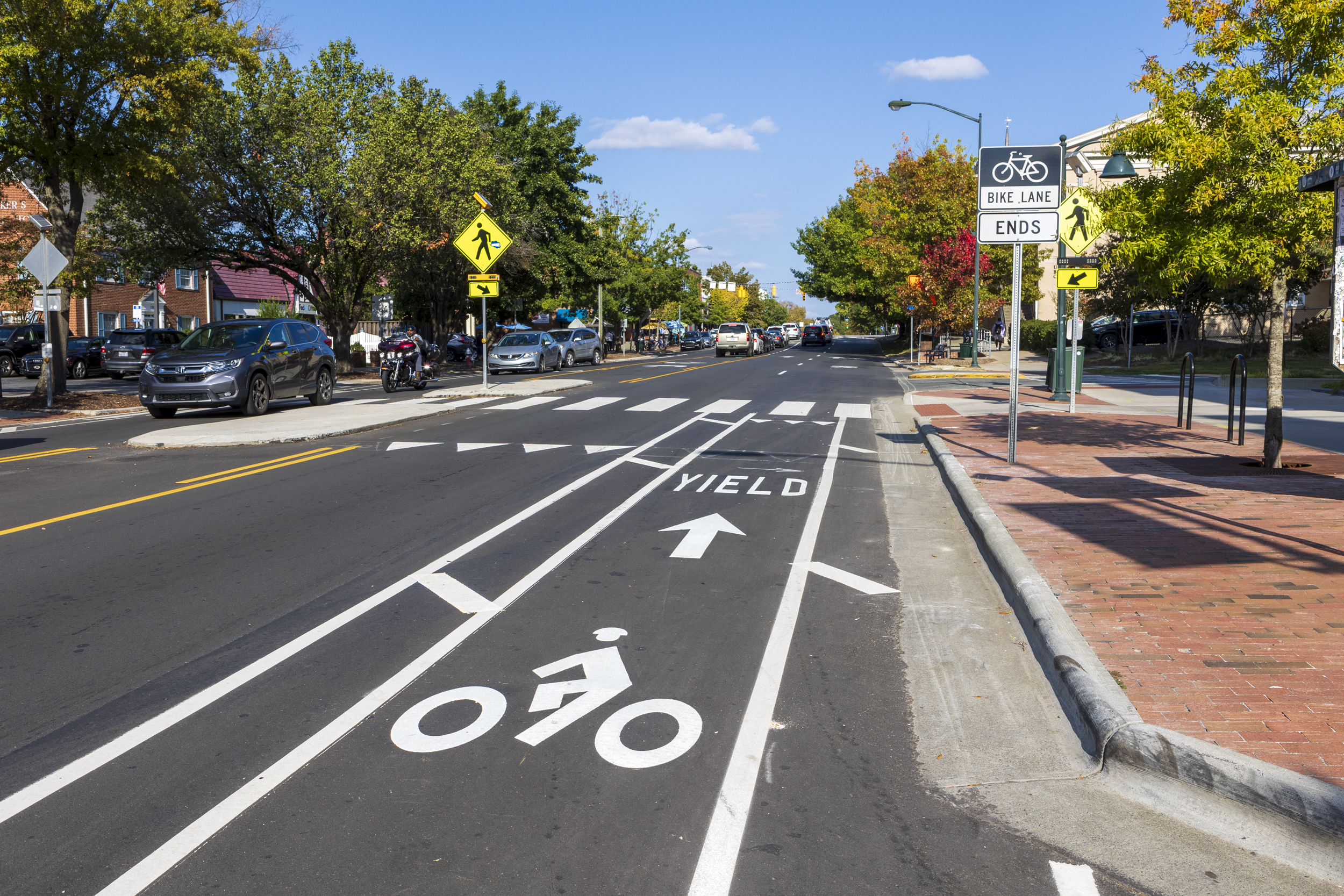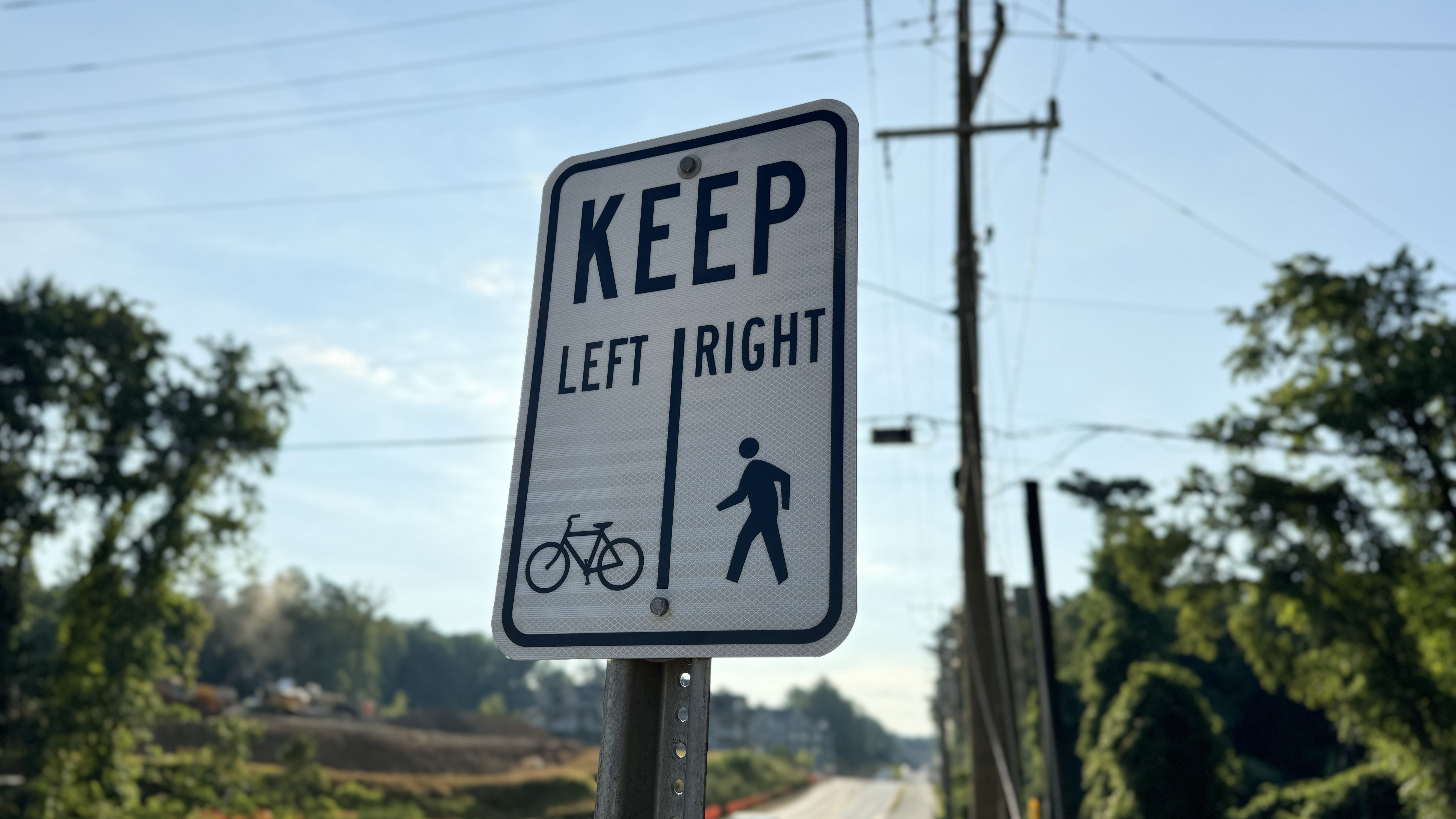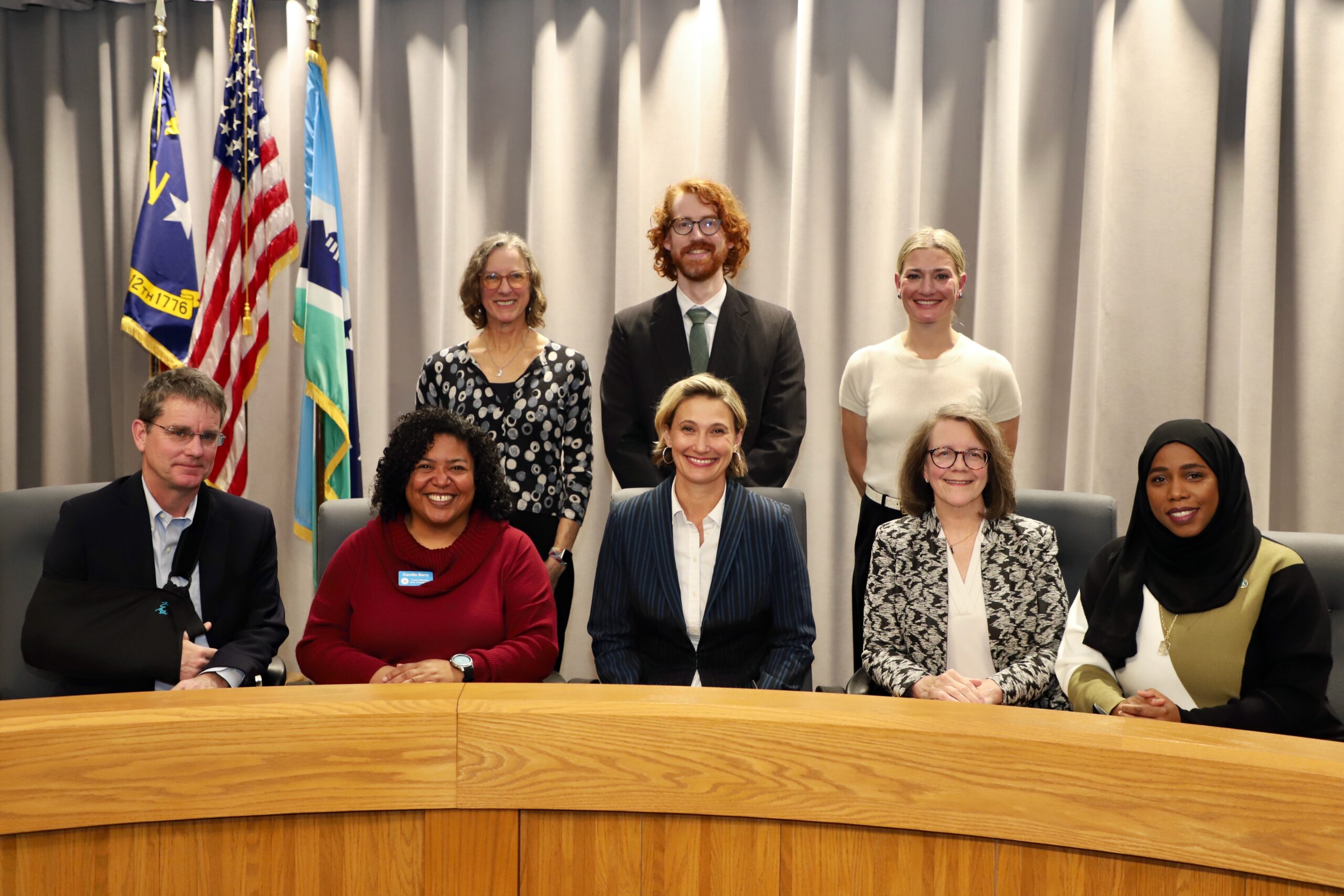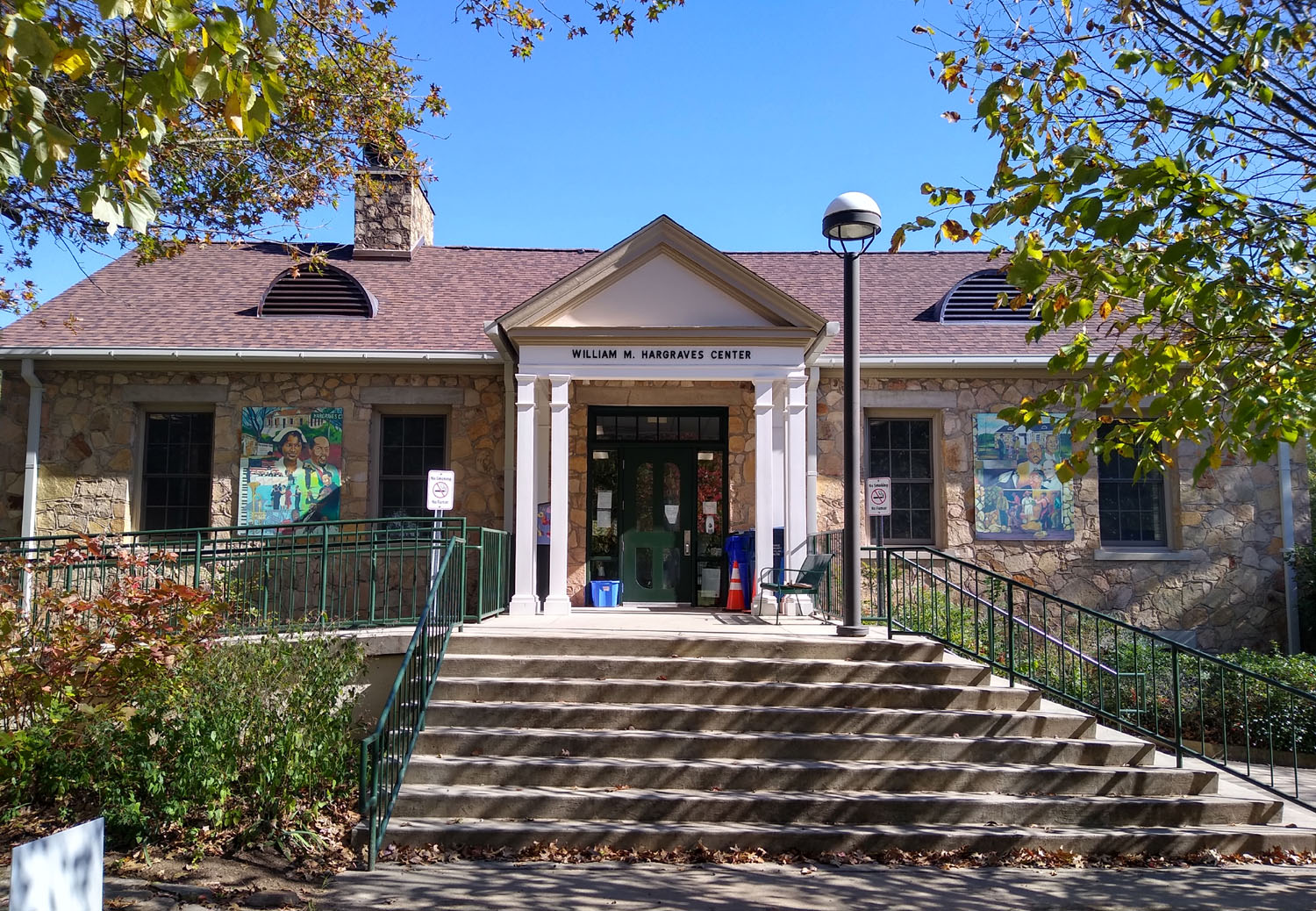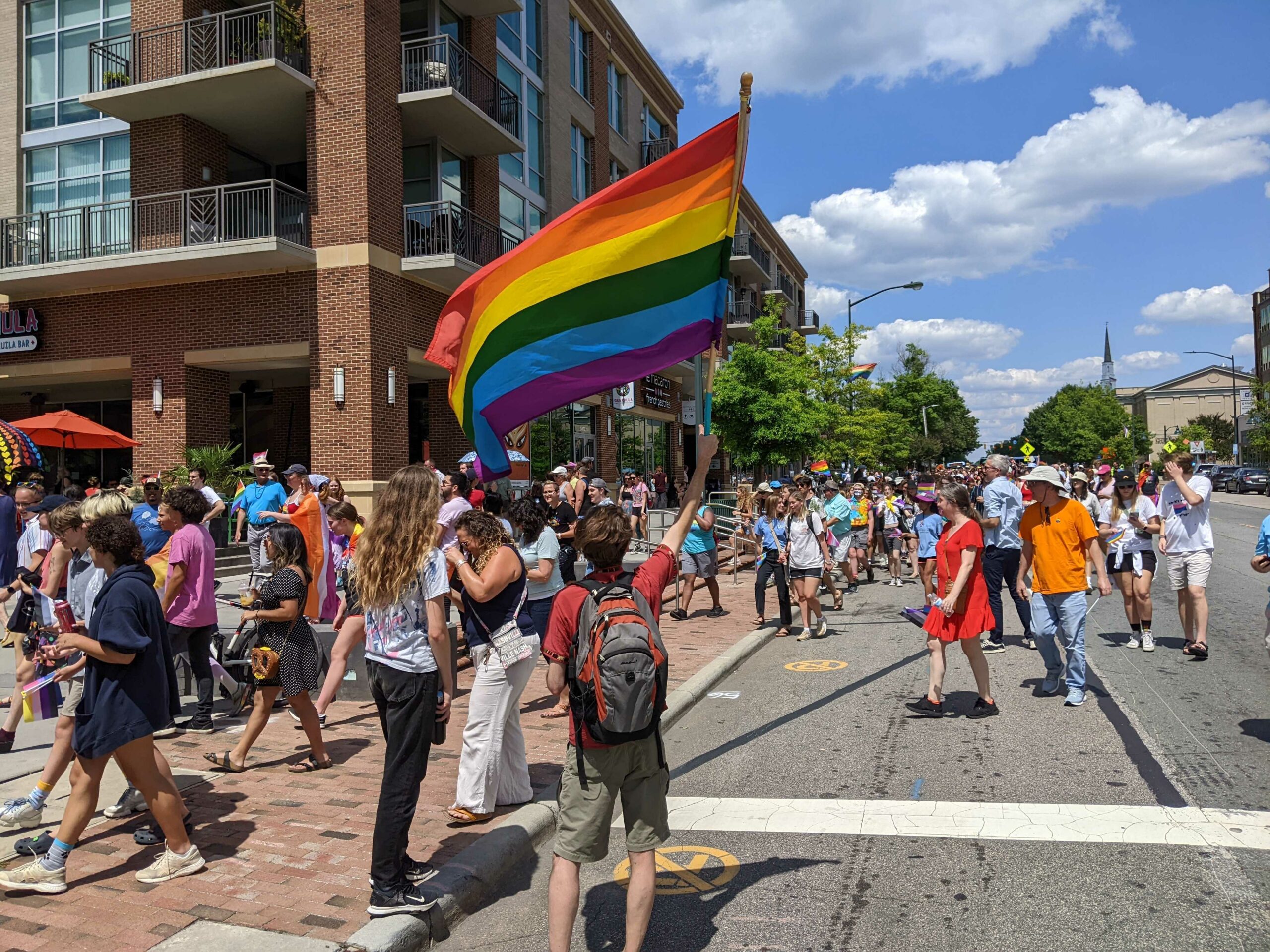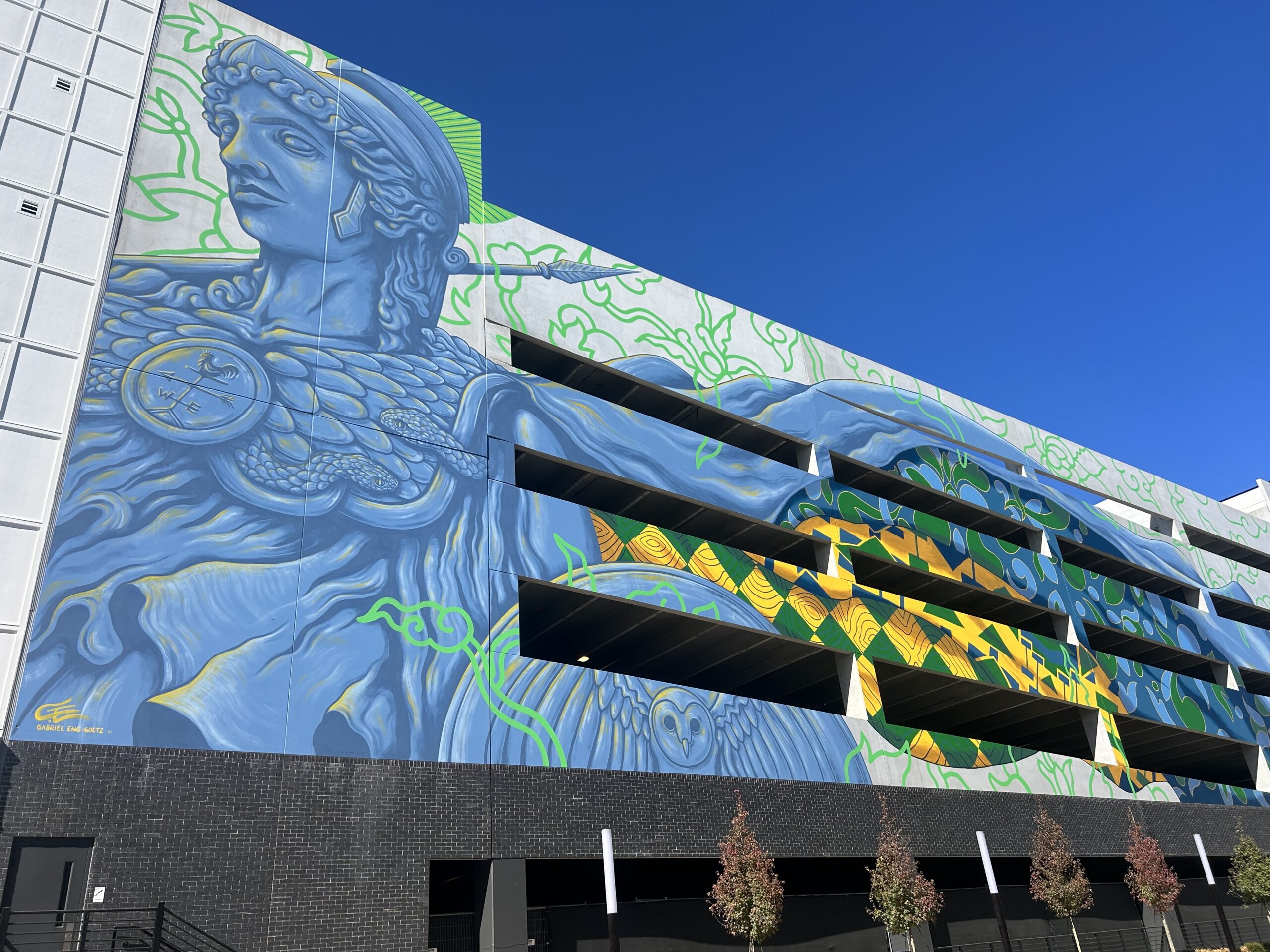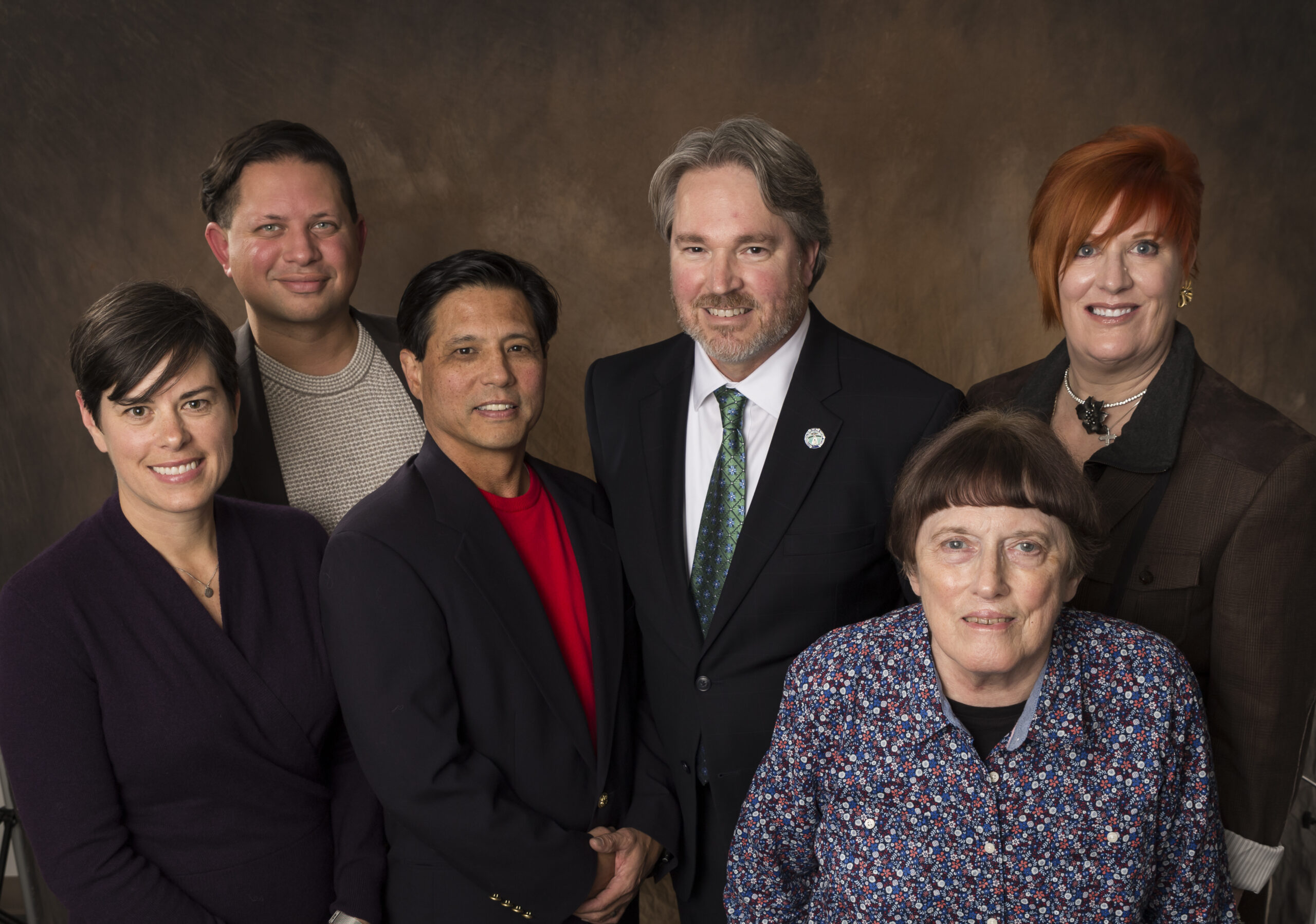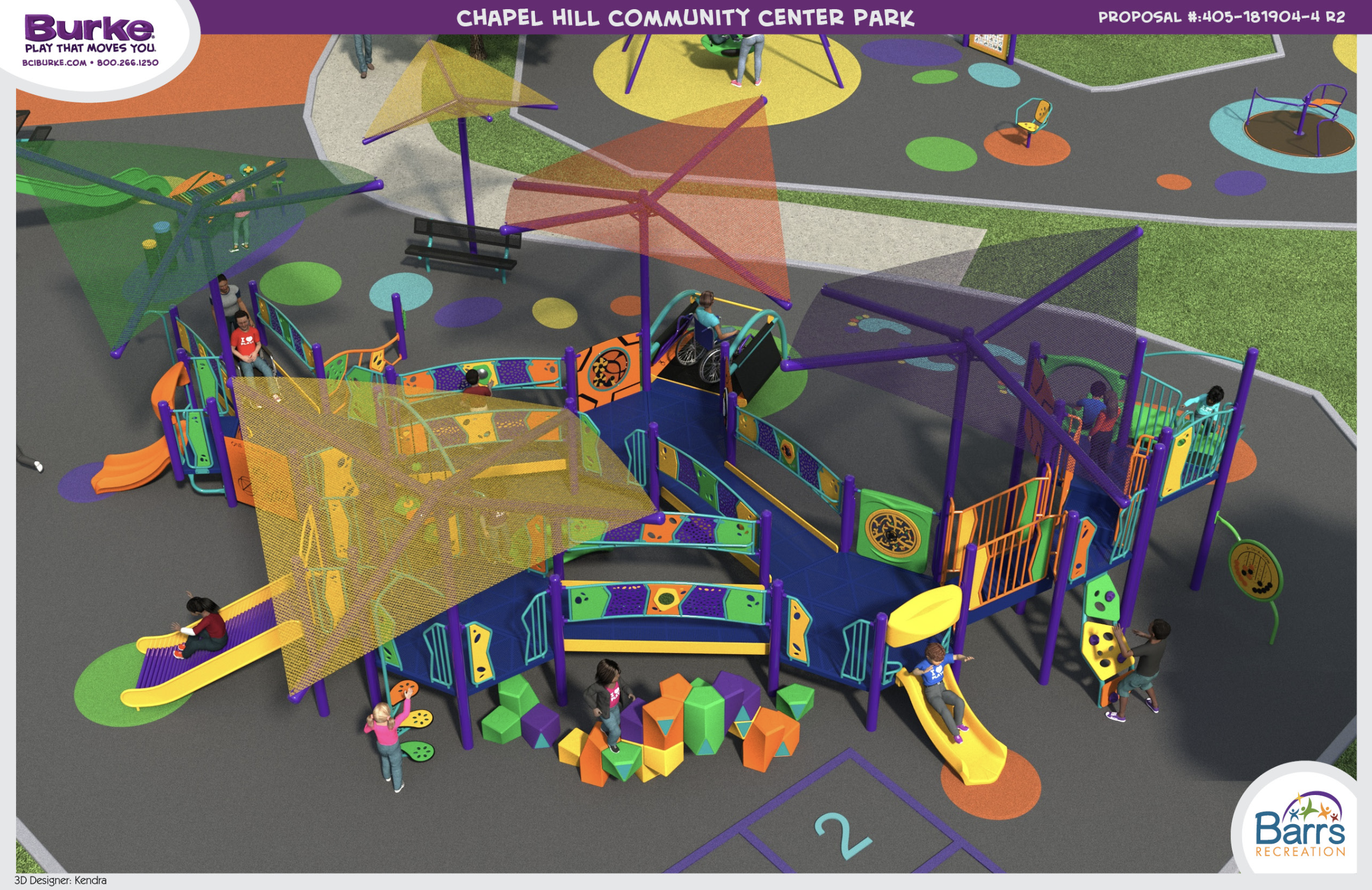The Town of Chapel Hill in collaboration with 97.9 The Hill WCHL & Chapelboro.com present “Our Town: Stories of Chapel Hill.” Each month you’ll hear from the people at the heart of your local government who are learning, serving, and working together to build a community where people thrive. This month, Bergen Watterson and Kurt Stolka from the Office of Mobility and Greenways tell the story of Vision Zero.
Kurt Stolka: Vision Zero is the goal to eliminate all serious injuries and traffic deaths on town streets. It’s a worldwide program, but here in Chapel Hill, we want to reduce that to zero by 2031.
Bergen Watterson: Vision Zero is important to our community because one death on our roadways is one too many. Serious injuries and deaths, they aren’t just numbers, they are people.
Stolka: Vision Zero is really important to Chapel Hill because being a university town, we have lot of new people moving in every year that haven’t been exposed to an urban environment where we’re used to walking and biking or taking Chapel Hill Transit. So they may be used to traveling in a different environment, like always on a highway or only in a car. So we need to constantly create that safety culture that people can keep in mind as they move around town.
Watterson: Vision Zero is a little bit different than the traditional way of looking at roadway safety. It looks at the entire system, not specifically at individual behaviors. That has typically been the approach, i.e. let’s give speeding tickets, let’s tell people to slow down. The Vision Zero approach acknowledges that humans make mistakes and works towards those mistakes not being fatal or resulting in serious injuries. And I think that’s the key difference between how historically we’ve approached traffic safety and how we’re trying to start doing that now. Looking at policies, at speeding, at individual behaviors, but also at how cars are made, how the roads are designed, the whole system approach to it, not just telling people to slow down.
Stolka: People should care about Vision Zero because we need to care about each other, and we’ve got busy lives that we’re leading. We’re kind of thinking inside our own head a lot and not looking out and seeing how we affect others.
Watterson: Another reason Vision Zero is important is because in addition to safety, the Town of Chapel Hill also values equity. And this is an equity issue. Not everybody can drive a car, whether they can’t afford one, whether they physically can’t drive one, whether they choose not to drive one, it doesn’t mean that they should be subject to unsafe conditions just because they’re traveling around town outside of a vehicle. And also, data shows that in general, black and brown and low-income people are more likely to be victims of traffic violence, and our work can change that for those most affected.
Stolka: It’s really the message of looking out for each other and making us as a community a safer place to, to live and work and play.
Watterson: One way people can see Vision Zero in action around town are the flexible white delineators that we’ve put in the road near the crosswalks along Martin Luther King Jr. Boulevard. Those are meant to keep cars from changing lanes right ahead of the crosswalks when people are crossing. And we all live busy lives, and sometimes it takes some additional reinforcement in addition to the lights and the crosswalks. We’ve put in these extra measures, just to remind people of the safety.
Stolka: When you see those crosswalk gateways it looks like just a bollard, but it does a lot of things that you don’t see, it narrows your vision, so you want to slow down ahead of the crosswalk, and that is gives the drivers more time to react to things that may surprise them and make it more survivable in case there is a crash.
Watterson: You can also see Chapel Hill Police doing crosswalk enforcement activities, all, all throughout every month, particularly around the beginning of school and beginning of UNC starting, when the time changes in November and it gets darker earlier, we do a lot of crosswalk and speed enforcement activities as well.
Stolka: In your neighborhood, you’ll see the bollards used for other things, not just corridor crosswalk gateways like we see at MLK, but also using them for traffic circles or for ways to shorten a crossing distance on your neighborhood street where there may be cars driving too fast past your house.
Watterson: Another way you might see Vision Zero around town are new bike lanes, another protected bike infrastructure. If you can make the road safer for pedestrians and bicyclists, people in wheelchairs, people taking transit, the road is safer for everybody. We’re also starting to focus more Vision Zero efforts around schools, in conjunction with our Safe Routes to School programs. So maybe looking at doing some neighborhood slow zones around, particularly elementary schools, where a lot of kids may walk and bike to school to make those areas safer.
Stolka: Some other ways you can see Vision Zero around town is through the bus ads that we have on our Chapel Hill Transit buses that provide some, some safety messages and cues for people to keep in mind as they move around.
Watterson: What you won’t see about Vision Zero is a lot of the behind the scenes work that we’re doing. Analyzing crash data, analyzing speed and volume data on not just our larger roads, but on our neighborhood roads as well. We’ve been developing our traffic calming policy and how to better streamline that process and get safety improvements on the road faster and more efficiently based on the data. So we’re doing a lot of data crunching and kind of working out how to tell our story and make that available to the public as well when we have it ready.
Stolka: After we’ve crunched the data, we go out to the neighborhoods where we see some issues and we talk to the residents and see what their stories are and make some observations and then see how we can improve it.
Watterson: So in addition to these very important smaller scale community projects that Kurt has been talking about, we’ve got a number of larger capital projects that are just starting to be kicked off that will improve the connectivity and the safety for bicyclists and pedestrians around town, including the Cameron Avenue protected bike lanes between the Libba Cotton bikeway and campus, and the Estes extension bike and pedestrian improvements that will continue the facilities that just finished on Estes, from MLK up to the Carrboro border, to name a couple of them.
Watterson (continued:) What I’m most proud of related to Vision Zero is that the town has grown the Vision Zero Program from a pedestrian safety action plan back in 2018. That staff, I won’t say hastily threw together, but that staff, staff wrote with limited time and resources to what we have now, which is a full blown, fully staffed, funded, multi-pronged program that really seems to be moving the needle. We’ve had some successes with the North Carolina Department of Transportation, with some approvals to do some different things on their roads, which have been notoriously difficult to make safety changes on in the past. It really feels like there’s the culture and the decision making, but within town and at the state level, might be starting to change a little bit.
Vision Zero is funded from taxpayer dollars. We do have a budget that the town provides us with. We also have an annual grant from the Governor Highway Safety Program that funds Kurt’s position and a lot of the other materials and work that we do around town.
We also are always looking for other grant funding. We’ve already received one Safe Streets for All grant from the federal government to look at the corridor around Martin Luther King Junior Boulevard, and some safety improvements we can do there. And any day now, we should be hearing about another Safe Streets for All grant that we’ve applied for.
Vision Zero is really important to me. I have three young kids at home who I really want to be alive, going forward, and I think about them when I’m out. If I’m driving around town, I think about these kids and I think about other people’s kids who might be on the road. And I drive with all of that in mind, looking at my own behavior when I’m behind the wheel, thinking about other people and caring about other people because I have little humans that I’m in charge of. I want to be their mother, and I want them to continue to be my children.
Sign up for Our Town, a weekly email with cool stories like this and all the latest news from the town.
Chapelboro.com does not charge subscription fees, and you can directly support our efforts in local journalism here. Want more of what you see on Chapelboro? Let us bring free local news and community information to you by signing up for our newsletter.

